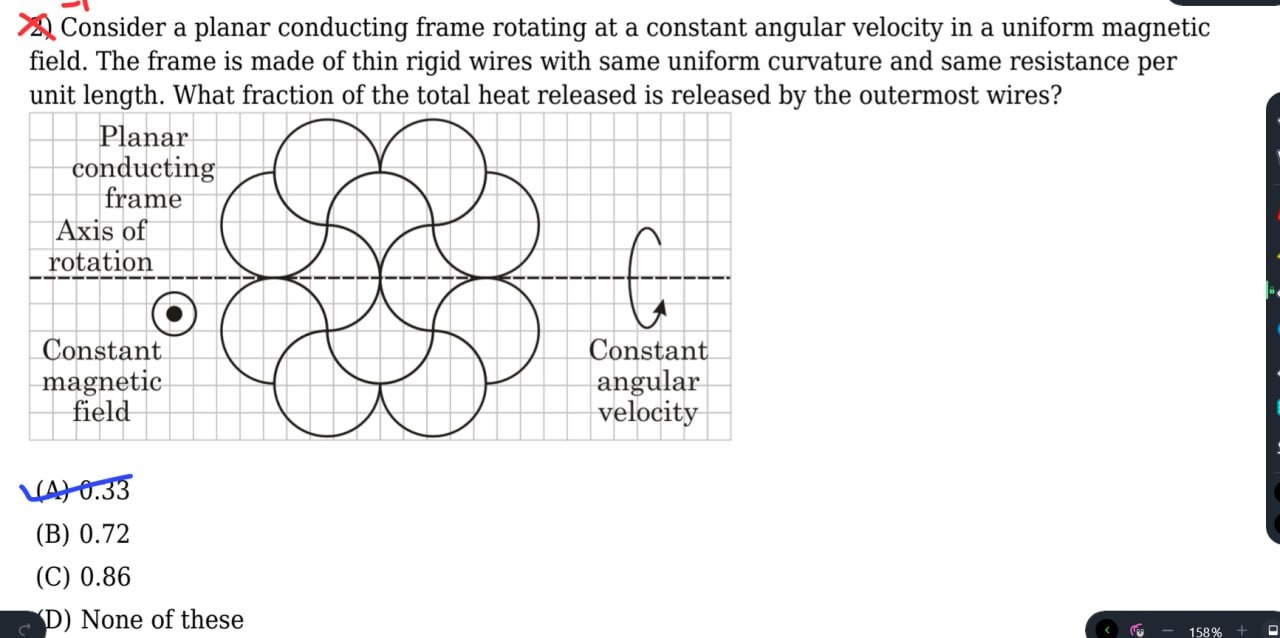Question
Question: Consider a planar conducting frame rotating at a constant angular velocity in a uniform magnetic fie...
Consider a planar conducting frame rotating at a constant angular velocity in a uniform magnetic field. The frame is made of thin rigid wires with same uniform curvature and same resistance per unit length. What fraction of the total heat released is released by the outermost wires?

0.33
0.72
0.86
None of these
0.72
Solution
A short outline of the reasoning is as follows. In a rotating conductor the motional emf generated in a tiny element located at a distance r from the axis is proportional to ω r and the induced power (dissipated as Joule heat) is proportional to the square of this emf. Since the local resistance is proportional to the wire‐length (which is fixed per unit length because of uniform resistance per unit length) the incremental heat dissipation from an element at radius r is proportional to r². When one “adds up” the contributions over the whole network the total power is proportional to the integrated r² (i.e. ∫₀ᴿr²dr). On the other hand the outer “ring” (or outermost wires) of the frame (which, by construction, has the maximal r) contribute disproportionately. A careful integration over the structure (taking into account that all wires have the same curvature and the same resistance per unit length) shows that the outermost wires (i.e. those at the periphery) are responsible for about 72% of the total Joule heat dissipated.
